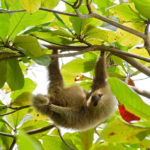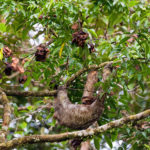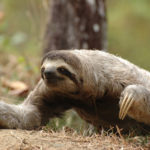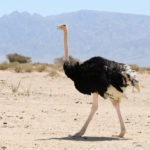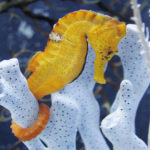Facts about sloths
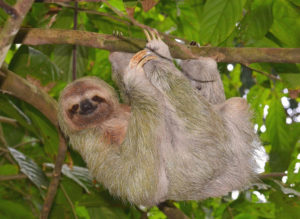 Sloths are amazing creatures. You can watch for a long time as they are imposing and at the same time gracefully moving, languidly covering their eyes and not hurrying anywhere. Perhaps, sloths know a lot about life – after all, as they say, who understood life – he does not hurry … But sloths are certainly nowhere and never in a hurry.
Sloths are amazing creatures. You can watch for a long time as they are imposing and at the same time gracefully moving, languidly covering their eyes and not hurrying anywhere. Perhaps, sloths know a lot about life – after all, as they say, who understood life – he does not hurry … But sloths are certainly nowhere and never in a hurry.
- In nature, sloths lack natural enemies, but these slow creatures escape from them due to the fact that most of their life is spent on trees, where not every predator can reach.
- The average speed of displacement of a sloth is about two meters per minute.
- Sloths move so slowly to save energy. This is due to the fact that all sloth eat exclusively vegetable food, not getting all the necessary vitamins. Such a slow rhythm of life allows them not to spend extra calories in vain.
- On the fur of some species of sloths grow symbiotic blue-green algae. For sloths they play the role of disguise.
- Sloths descend from the trees only to correct the need, and it usually is not more often than once in 5-7 days.
- Some types of sloths, for example, three-toed, can turn their heads almost 300 degrees, which is more than even the owls.
- Despite some external resemblance to primates, the closest biological relatives of sloths are armadillos and anteaters.
- Archaeologists argue that once on Earth there were sloths, the size comparable to Asian elephants.
- On the digestion of some types of plant foods in sloths takes 3-4 weeks. The fact is that their digestive system also differs by leisure.
- Sloths are great swimmers, oddly enough.
- Descent from the tree every time is a difficult task for the sloth.
- In most species of sloths, an extremely acute sense of smell, they are able to easily isolate the plant of interest from the total mass of the jungle at a considerable distance.
- Long claws serve sloths for safer movement through trees, and are not used by them for self-defense. Sloths are completely harmless and even defenseless.
- Fat reserves in case of their appearance in sloths are deposited in the pads of their hind legs.
